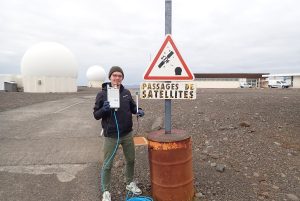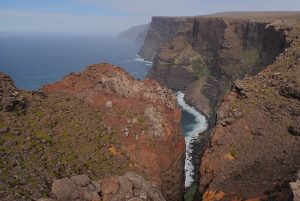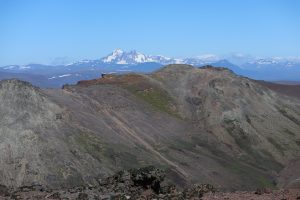The Internet of Remote Things: Budding scientist packs a Wirnet Station in Kerguelen
Known for its ability to ensure robust performance in harsh climates and locales, Kerlink’s Wirnet Station LoRaWAN gateway has taken up an experimental, temporary residence on the Subantarctic Kerguelen Islands, a windswept archipelago in the south of Indian Ocean – also known as Îles de la Désolation.
Kerguelen is a French Subantarctic Island discovered in 1772 by the French navigator Yves-Joseph de Kerguelen-Trémarec. They are among the most isolated places on Earth, more than 3,300 km (2,051 mi) away from the nearest populated location. The only way to reach the Island is by 20 days of travel on the Marion Dufresne Research Vessel. The climate is raw with frequent high winds throughout the year. Their indigenous are home to large populations of ocean-going seabirds, seals, and penguins.
The deployment is the idea of Clément COURTEL, a French Network Engineer of Télécom Bretagne who is on a civic service volunteering with the French Polar Institute (IPEV). The Institute is in charge of scientific programs on French Subantarctic Islands (Kerguelen, Crozet, Amsterdam, Saint-Paul) and Antarctic land (Dumont D’Urville and Concordia). As his own side project, he took along the necessary hardware to deploy and test a LoRa-based network. He chose Wirnet stations for the network and Kerlink was happy to loan him a one.
Few months after arriving at Port-aux-Français, the only city of Kerguelen, Clément shared his first impressions:
“The community life is going well and the landscapes are beautiful. It’s a big change from France, far away from the covid. For the 12 next months, I will be in charge of several scientific programs that include carrying out seismic, geomagnetic, sea-level measurements and the whole computer and network part of the staff of IPEV. I participle also in other science programs, such as ornithology or botany on the rich fauna and flora of Kerguelen. It’s varied and I love it.”
Clément set out to launch his own LoRa/LoRaWAN network without Internet connection.
“We have an Internet connexion at 100kbps by satellite, and it’s used mainly by seismological monitoring, tsunami alert beacon and emails. In that condition, I wanted to build an architecture with the LoRa Network Server from ChirpStack and a graphical interface with Grafana. All in local network. The object that I use is the RAK7205 of RakWireless, with temperature, humidity and barometric sensors, that I had bought before leaving. This first goal was mainly to discover this new technology by received a data from the sensor and display it to an application service. And It works!”
“I installed a sensor in the hiking bag of an ornithologist on his way to Courbet Peninsula, to observe the large albatrosses and penguins. The sensor sends me temperature, humidity and barometric pressure data. I’ve reached a distance of 25km, which is, I think, not too bad for a first installation. The most northern point of the Courbet Peninsula is about 35 km away.”
“I found some super interesting use cases for scientific programs, which could greatly simplify the life of researchers working in the field. For example, I’ve discovered that our biologists deploy more than 40 temperatures and lights sensors in ponds around Kerguelen. They have to check them and collect data by Bluetooth multiple time in a year. I will continue this project in the coming months. I want to start programming objects with Arduino or stm32 with radio module.”





